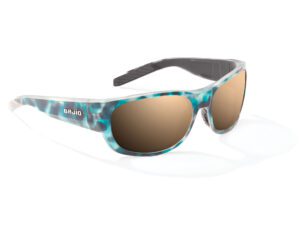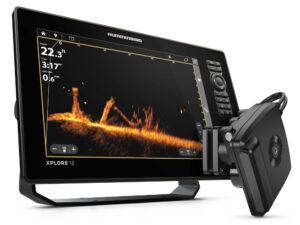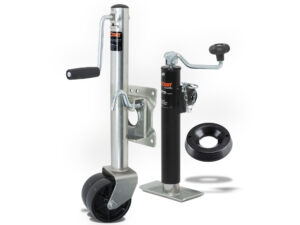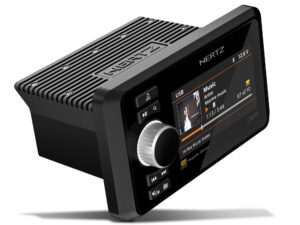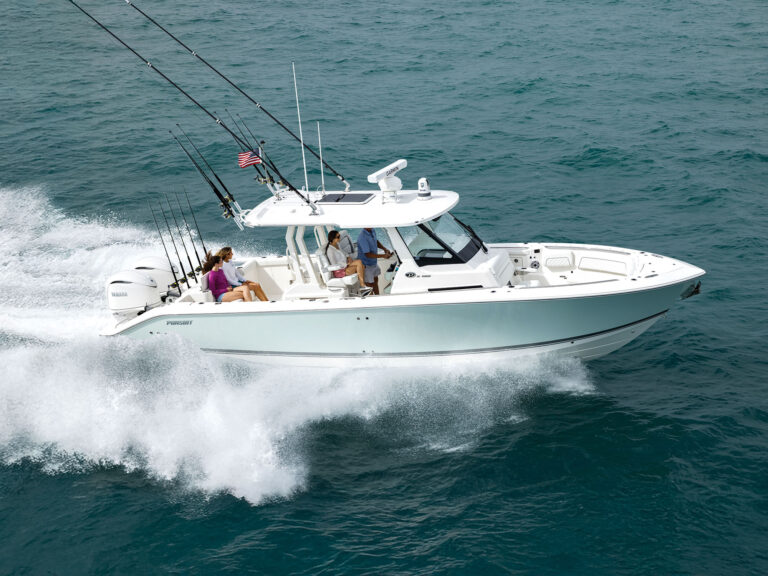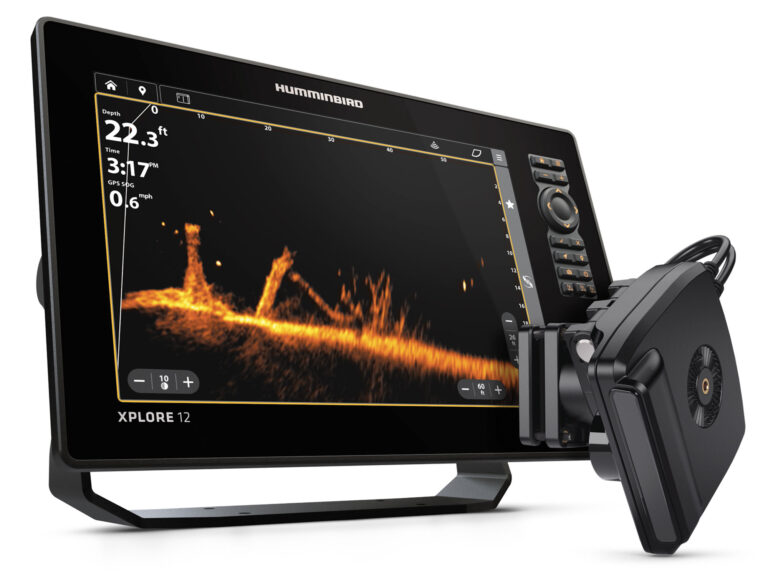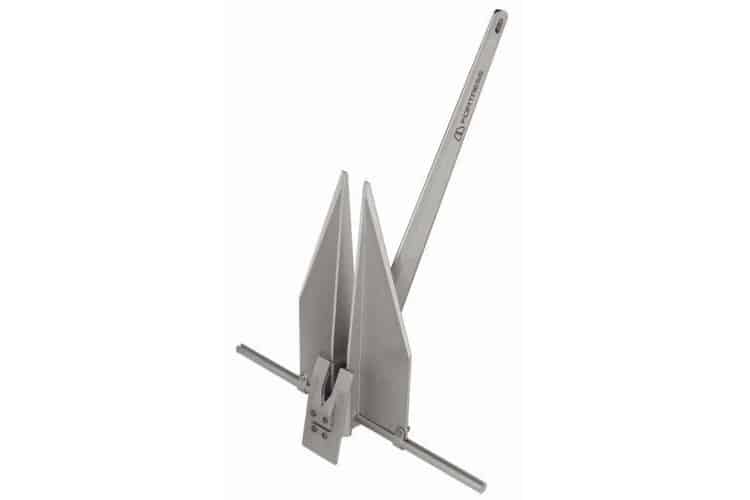
21 pounds — corrosion-resistant, high-tensile aluminum/magnesium alloy
(Note that the skipper can set the flukes of the Fortress FX-37 at 32 degrees for most mud/clay bottoms and 45 degrees for very soft mud. We tested it in both configurations, so it counted as two different anchors.) Boating Magazine
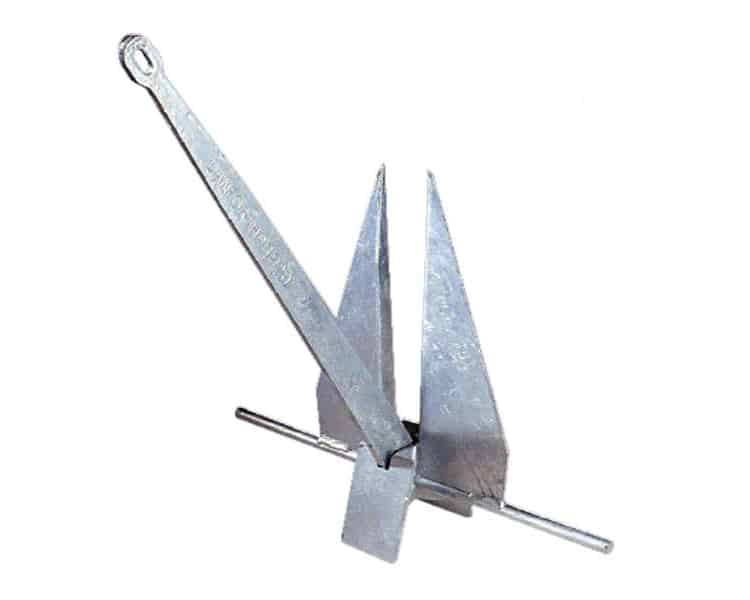
35 pounds — galvanized, high-tensile steel Boating Magazine
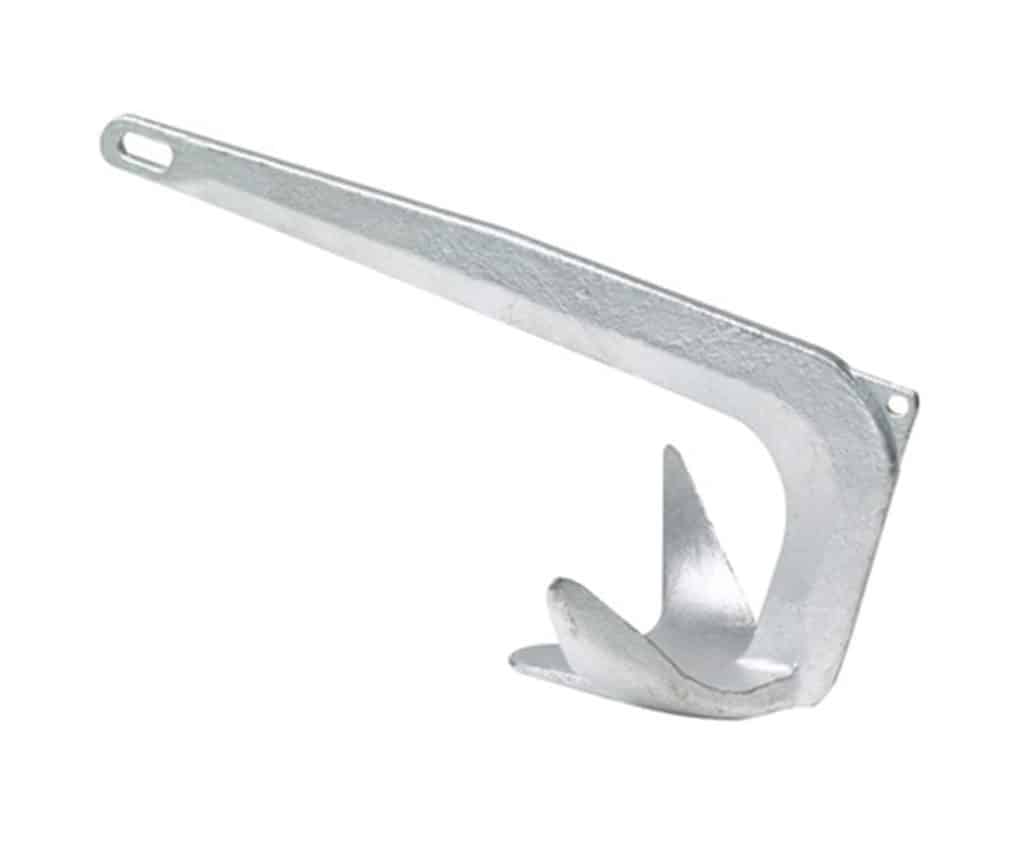
44 pounds — galvanized, high-tensile steel Boating Magazine
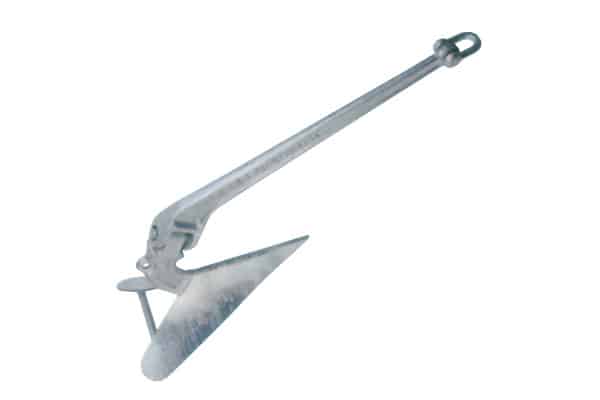
45 pounds — galvanized, drop-forged steel Boating Magazine
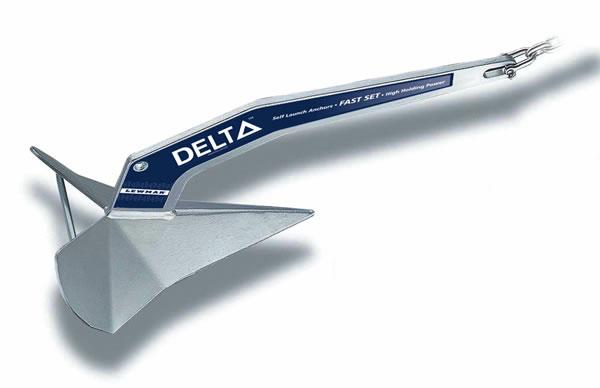
44 pounds — galvanized high-grade manganese steel Boating Magazine
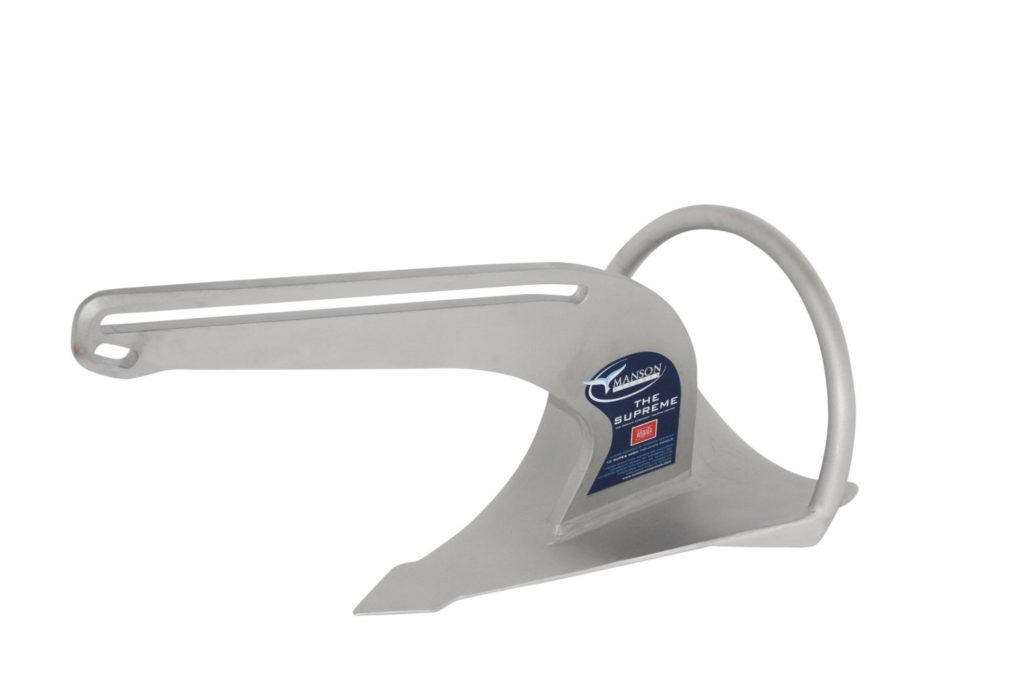
45 pounds — galvanized, high-tensile steel Boating Magazine
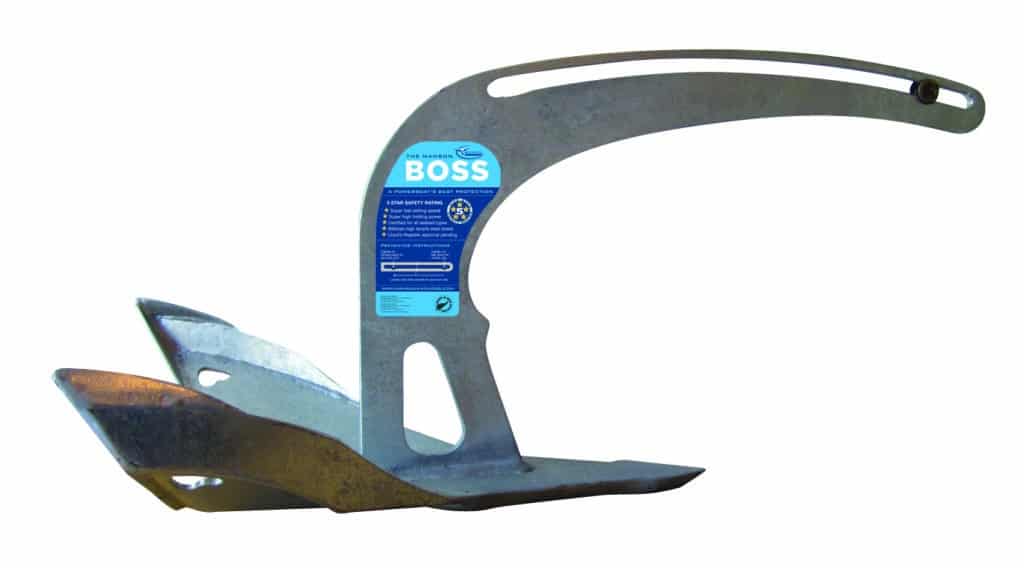
45 pounds — galvanized, high-tensile steel Boating Magazine
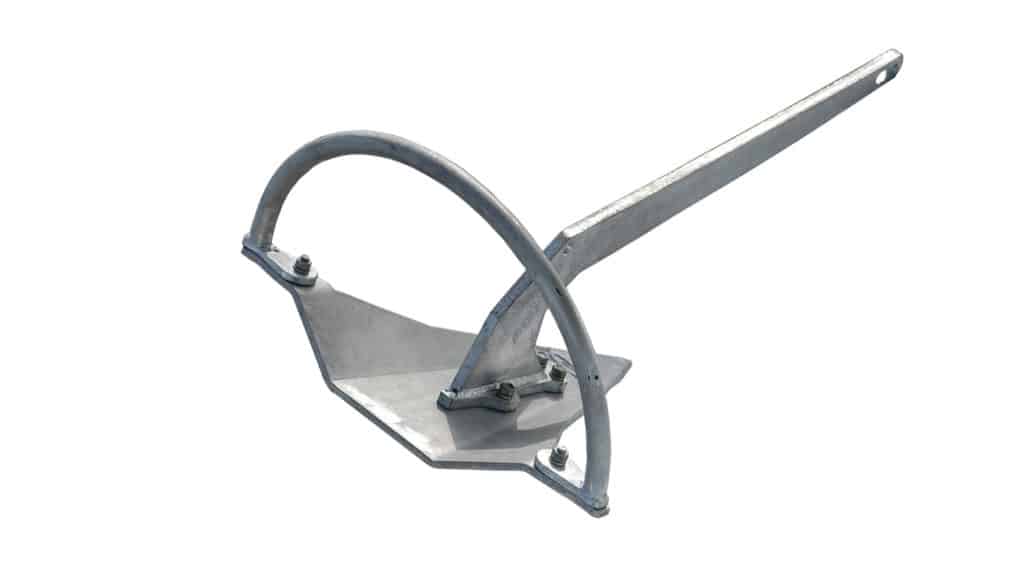
45 pounds — galvanized carbon steel plate Boating Magazine
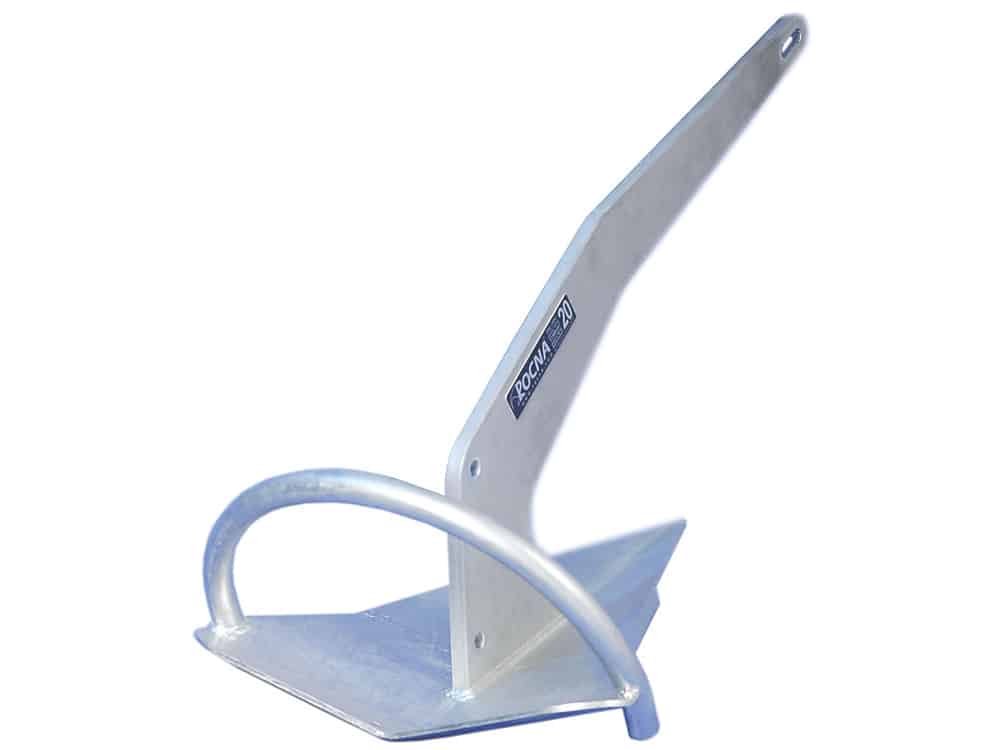
44 pounds — galvanized, high-tensile steel Boating Magazine
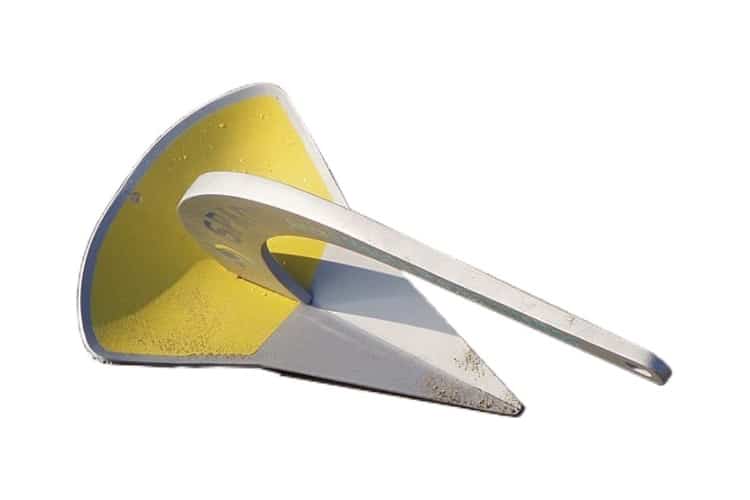
44 pounds — galvanized, high-tensile steel Boating Magazine
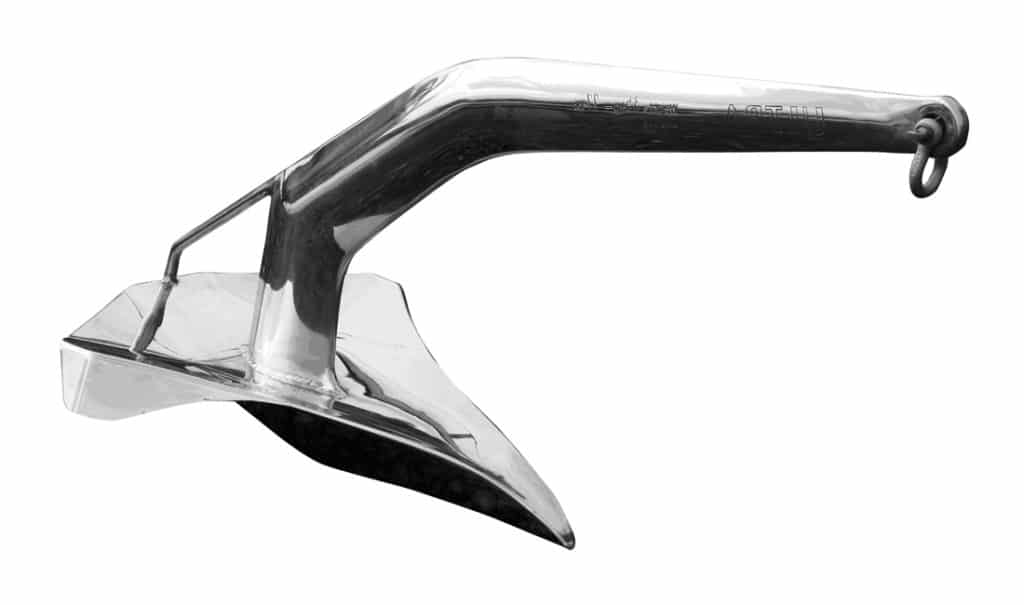
46 pounds — high-tensile, polished stainless steel Boating Magazine
Editor’s Note: Many factors will affect anchor selection. Some are boat related, including an anchor’s ability to stow or be deployed. Others relate to location and bottom composition, such as the anchor’s ability to set and to reset itself during a tide swing. Furthermore, in bottoms of varying composition, the performance of different anchors will vary. Performance will also vary if the components of the anchor rodes are different. This test compares anchor performance in the same location, with the same rode, and in a mud-clay bottom only.
Will the anchor hold? Good question. Your life might depend on your answer. In a constant quest to evaluate anchor-holding power for its own products and the competition, Fortress Marine Anchors set up a rigorous test of 12 comparably sized, premium-brand anchors in typical mud/clay bottom of the Chesapeake Bay at Solomons, Maryland. Brian Sheehan and several other Fortress executives invited a dozen boating journalists to participate and “keep the testing honest” by carefully analyzing the methods and results over four days. Chuck Hawley, former vice president of product testing at West Marine and a videographer, recorded comments on each test (available at fortressanchors.com). Here’s what we found.
Methodology
Testing order of the anchors was random. They ranged in weight from 21 to 46 pounds and were designed for cruising boats in the 35- to 40-foot length overall range. Our platform was the 81-foot research vessel Rachel Carson, owned and operated by the University of Maryland’s Chesapeake Biological Laboratory at Solomons. With its twin 1,205 hp MTU diesels driving Hamilton water jets, 30 hp bow thruster, research-grade GPS (accurate within 0.0003 degrees) position-keeping system and 20 hp hydraulic winch with stainless cable, the big boat proved excellent for anchor testing.
The Fortress staffers and Rachel Carson‘s skipper, Capt. Mike Hulme, picked out a broad testing area of mud/clay bottom in 26 feet of water. At a specific point (a datum), the deck crew placed each anchor overboard, and Hulme set off along a specific compass course (azimuth). When the scope reached 5:1, he proceeded another 100 feet and engaged position-keeping, jets and thruster keeping the vessel on station. Then first mate Rob Nilsen wound the anchor back in for 10 minutes (100 feet) with the winch. A tensiometer set into the cable’s run measured the anchor’s resistance (holding power) in pounds, recording it continuously on several linked computers in the vessel’s lab room as the scope fell from 8.8:1 to 5:1. Then Hulme backed over the anchor, and the deck crew retrieved it.
For each pull, we watched the tensiometer plot resistance over time as the winch plowed an anchor through the bottom. Then we crowded around to look at its condition and the bottom material left on it. Chuck Hawley and the videographer recorded a summary after each pull. We writers scribbled notes. Afterward, Hulme returned Rachel Carson precisely to the datum, taking a different azimuth for the next anchor, to keep from plowing the same piece of bottom again and again. During four days, the crew tested each anchor five times.
The test protocol called for discarding fouled anchors in making the final judgment. Fate illustrated the wisdom of this provision on the first pull of the Fortress FX-37, when it broke free on long scope because, as we learned when it got back to the deck, it had picked up an oyster shell thick enough to jam between the flukes and the shank. The next day, another anchor picked up nylon line and a waterlogged stick.
The Right Stuff
So what do we take away from all of this research? You need the right anchoring gear and the know-how and experience to safely and securely anchor your boat. Check out these seven essentials.
1. There is no such thing as “set it and forget it” with anchors. As in baseball, where every pitch counts, each anchor set brings its own challenges.
2. Even with all of the data available, anchoring remains a blend of science and seamanship.
3. Always remember: “Any anchor can fail to set the first time on any given day.”
4. Pay close attention to the specific area of bottom where you plan to set your anchor. Learn to read the sonar signatures of mud, sand, shell and combinations of those materials. As a backup, “fly the lead pigeon,” dropping a lead weight with a sticky substance like wax on it to pick up a bottom sample.
5. Think about all of the conditions that could affect the area where you propose to anchor, including depth, shoreline, other boats, “dragging room” and predicted wind.
6. If you, your family and your boat are going to depend on your anchoring systems for everything from a carefree lunch and a good night’s sleep to survival in a major storm, learn all you can about anchoring. There’s a lot of information out there ranging from the Anchoring Information tab on the Fortress website to the classic Chapman Piloting & Seamanship (67th Edition, 2013, $30 to $40 from amazon.com).
7. Finally, go boating. Put in your time on the water; learn from both your experiences and your conversations with other skippers; integrate all of it and put it to work for your boat, your family and yourself.
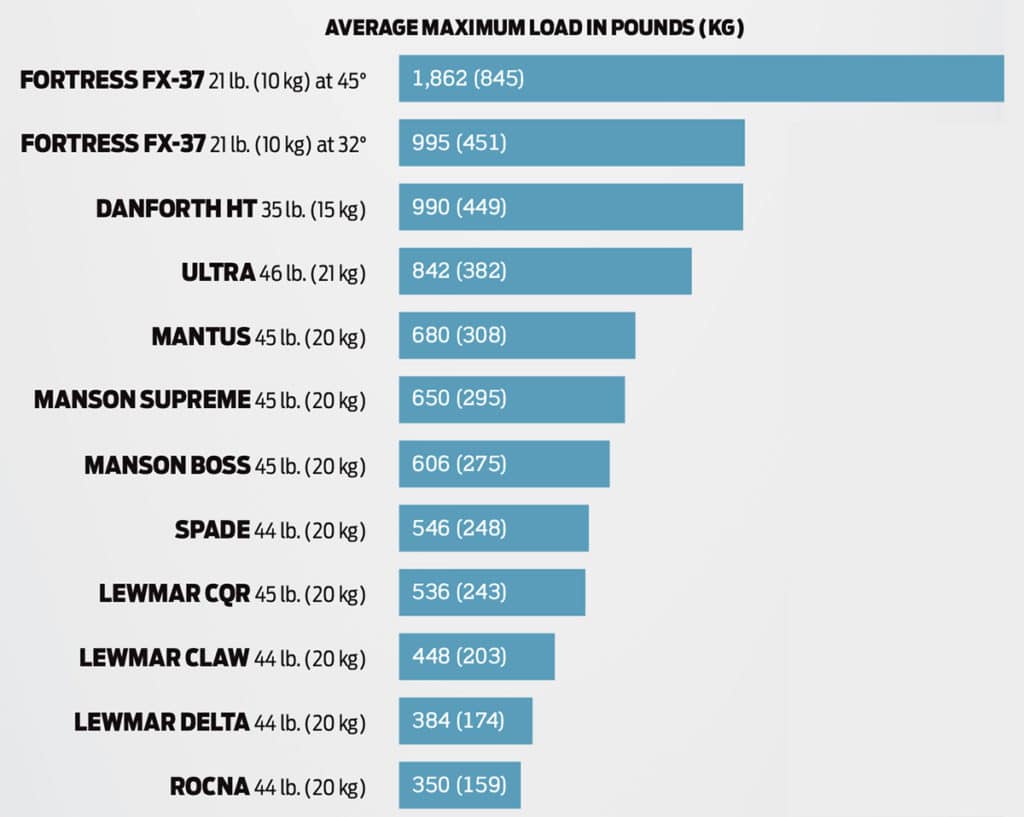
Results
The holding power curves for five pulls of each of the 12 anchors (including two for the Fortress FX-37, set at 32 and 45 degrees) are available for viewing at fortressanchors.com. You’ll note that Mike Hulme and the Fortress crew started at a new datum each day so that the anchors were worked through a fresh area of bottom.
It was impressive to see how much the results could vary from set to set with the same anchor in the same area. Every anchor failed to set initially at least once, and several broke free partway through because of either debris on the bottom or a change in the bottom’s composition.
During 54 pulls, the nine plow-type anchors held more than 1,000 pounds only twice. Their holding power peaked at scopes between 7:1 and 6:1. Several of the plow types showed reassuring consistency, helpful in a storm situation, where there is room to drag a little.
The highest holding power (more than 1,200 pounds) came from the fluke anchors, with the Fortress FX-37 set at 45 degrees (its soft-mud setting), peaking at 2,000 pounds. (At one point when it was in that range, the wake from a passing boat jostled Rachel Carson slightly, and the added force caused the breaker on the winch system to trip.) Note, though, that even that anchor delivered varying performance from pull to pull and within each pull.
We saw amazing variation in bottom consistency even in the relatively small area where we were working. I spent some time in Rachel Carson‘s wheelhouse with Hulme, watching bottom signals on a Furuno FCV-585 sounder. The bottom hardness varied from firm clay to super soft, giving value to the protocol of averaging the results in judging each anchor’s performance.
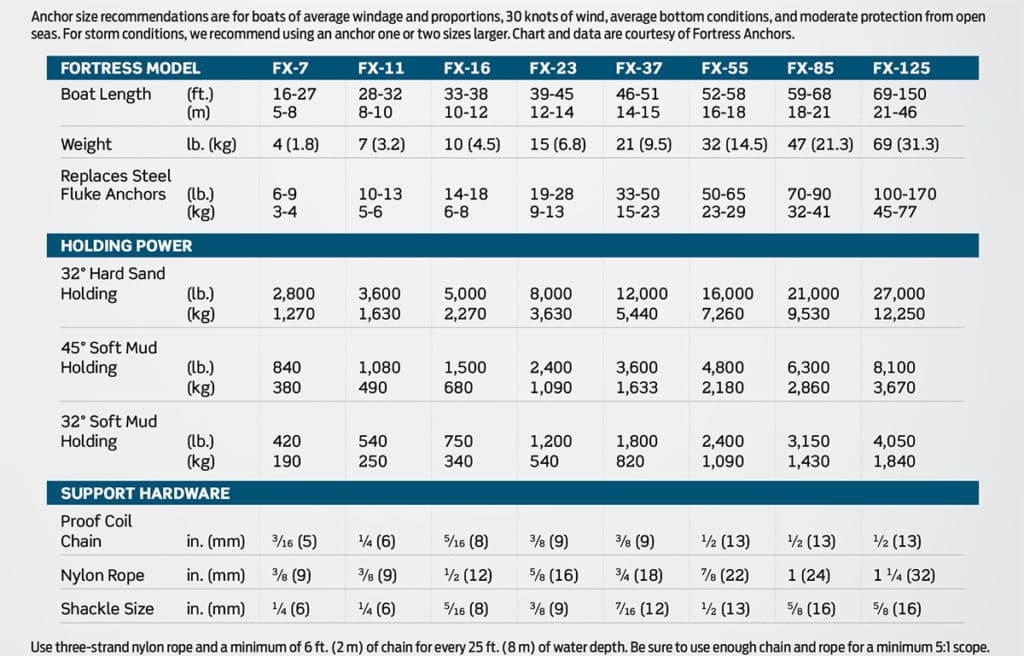
Two Is Better Than One
Always carry at least two anchors. Start with a main one whose rated holding power matches your boat’s length, beam and displacement. Add a lighter “lunch hook” for short stays and fishing. Having the lunch hook will also allow you to set both to hold a precise position, if necessary. Oh, and make sure you have a secure storage place aboard for each anchor before you buy it.

